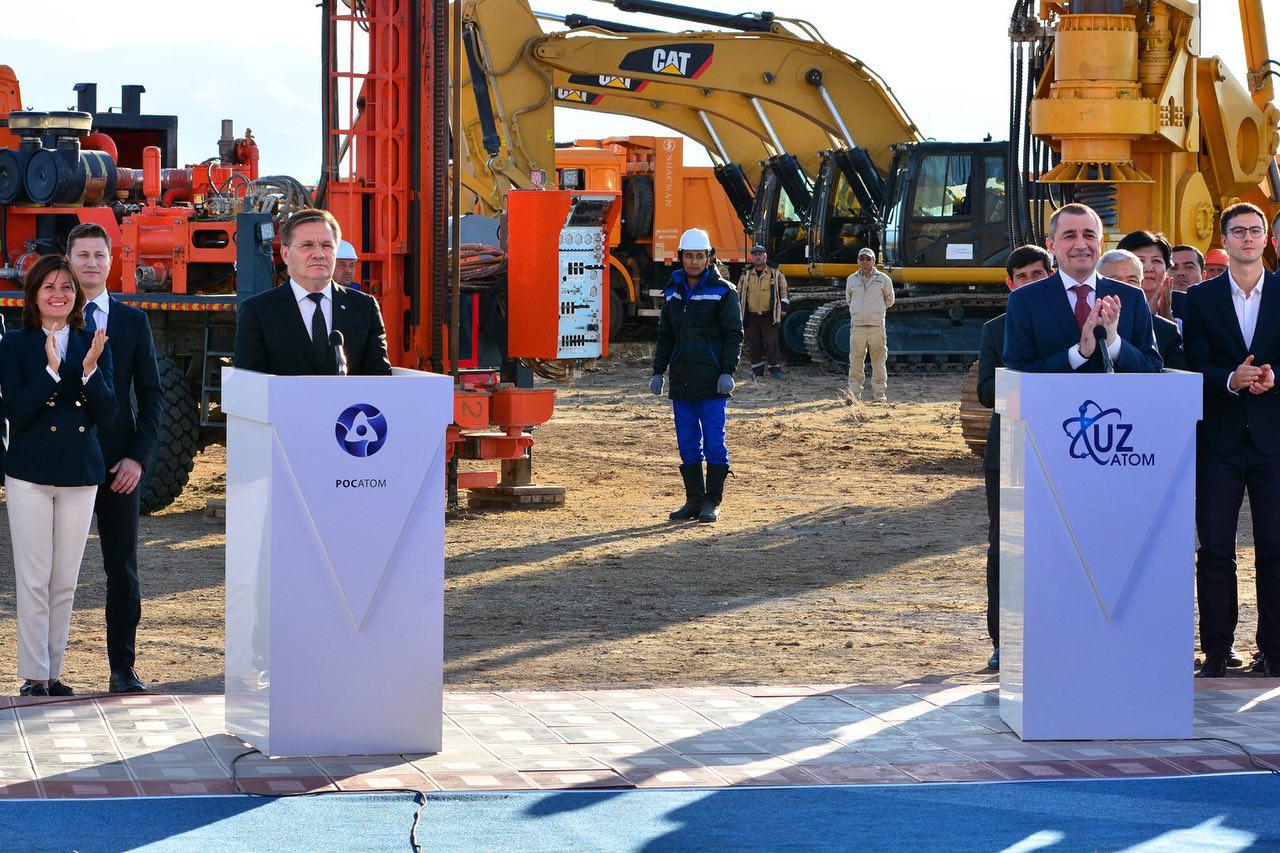
Uzbekistan Goes Nuclear
back to contentsThe event marked the beginning of site surveys to determine the best location for construction. Geotechnical drilling is currently underway at one of the sites, pre-selected for the project based on seismological, geological, environmental and economic feasibility studies.
Uzbekistan’s President Shavkat Mirziyoyev and Russia’s President Vladimir Putin have launched the drilling by pressing a symbolic button.
The Uzbekistan nuclear power plant will be the first large-capacity NPP in the Central Asia. The project envisages building two Generation III+ power units based on VVER-1200 reactors. Thanks to its enhanced reliability and modern design, the facility will be fully compliant with the IAEA safety standards.
“Uzbekistan and Russia have been cooperating in nuclear for more than half a century, and we are proud that Uzbekistan has chosen the Russian technology to build its first nuclear plant,” Rosatom’s Director General Alexey Likhachev said, speaking at the event.
As of now, natural gas accounts for nearly 84% of Uzbekistan’s energy mix. The local government seeks to replace some of its gas power plants with nuclear generation. Doing so will help in raising Uzbekistan’s natural gas exports and make its energy mix ‘greener’.
On October 19, 2018, Rosatom, the Academy of Sciences of Uzbekistan and the Nuclear Energy Development Agency (Uzatom) signed a memorandum on cooperation in workforce training for the country’s nuclear power sector and related industries. The memorandum also provides for a branch of the National Research Nuclear University (MEPhI) to be set up in Tashkent. These agreements will help Uzbekistan in developing nuclear infrastructure to operate the NPP safely.
General Director of Uzatom Zhurabek Mirzamakhmudov , and Alexey Likhachev also signed a memorandum of understanding to raise public awareness regarding nuclear power in Uzbekistan.
Likhachev told reporters that the contract for construction of Uzbekistan’s first nuclear power plant could be signed as soon as the spring of 2019.
For reference:
In 1953, the Republic of Uzbekistan started mining uranium at a large deposit near Uchquduq in the Bukhara Region. As soon as 1958, the government made a decision to set up a mining company (later known as NMMC) and a town of Navoi. The town and the plant were built primarily by engineers and workers from Russia (the Russian Socialist Federative Soviet Republic at that time). NMMC is currently a Top-10 gold and uranium producer in the world.
At present, Uzbekistan operates VVR-SM nuclear research reactor designed by Dollezhal Research and Development Institute of Power Engineering (a Moscow-based subsidiary of Rosatom). The reactor is installed at the Uzbekistan Academy of Sciences Nuclear Physics Institute located in Ulugbek, a town near the country’s capital Tashkent.
In 2009, the VVR-SM reactor was upgraded to use IRT-4M, a low-enriched nuclear fuel grade with 19.8% of U-235. The design was developed by Uzbek engineers with Kurchatov Institute as an academic advisor.
On December 29, 2017, Uzbekistan and Russia signed an agreement on peaceful uses of nuclear power.
On July 19, 2018, President of Uzbekistan Shavkat Mirziyoyev issued a decree to establish the Nuclear Energy Development Agency (Uzatom) with the Cabinet of Ministers of Uzbekistan.
On September 7, 2018, the prime ministers of Uzbekistan and Russia, Abdulla Aripov and Dmitry Medvedev, signed an agreement to build a nuclear power plant in Uzbekistan. The project is aimed at constructing two VVER-1200-based power units, the first of which is scheduled for commissioning by the end of 2028.




